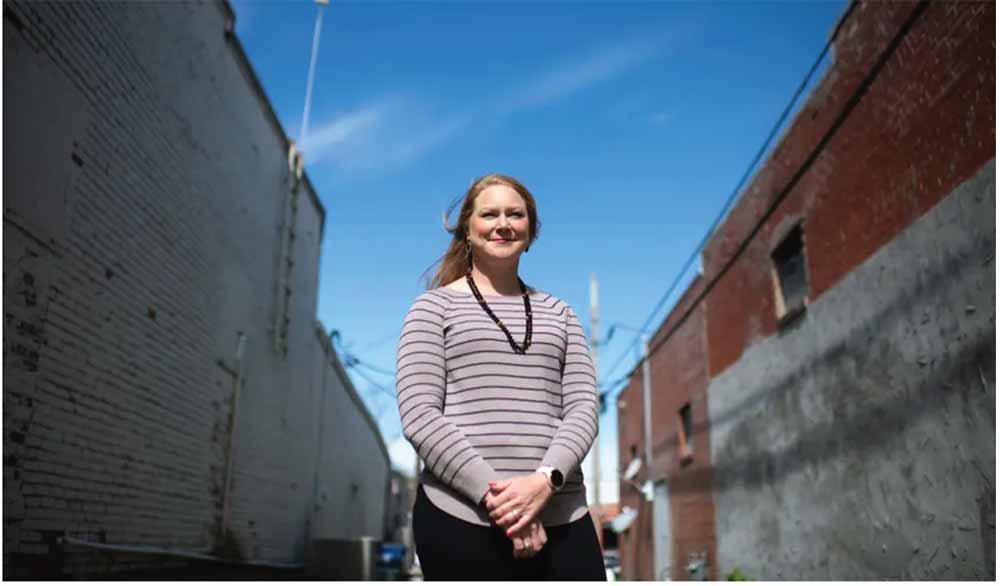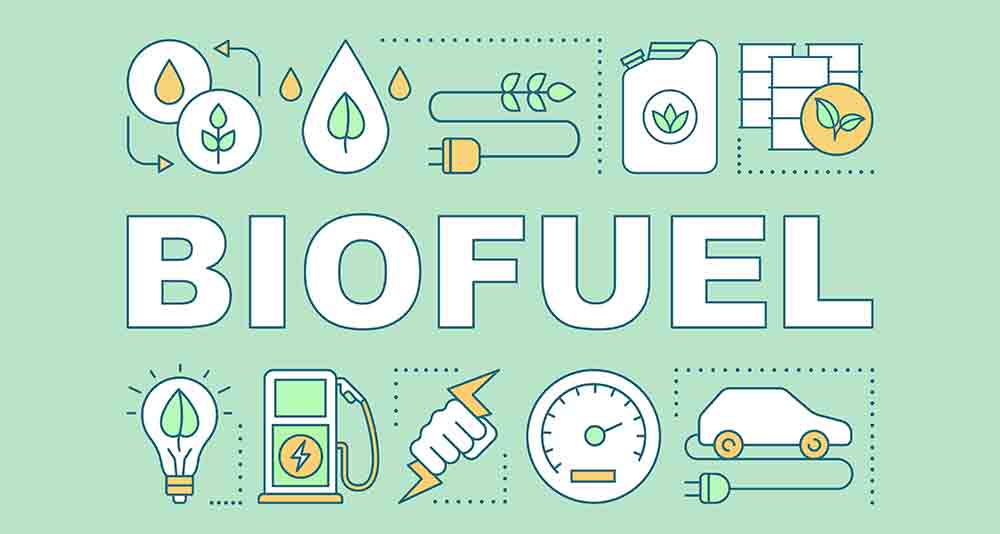 Write a comment
Write a comment
 Nancy Shanafelt, the tax assessor-collector for Trinity County, in Groveton. Shanafelt has diabetes and wears a monitor that checks her blood glucose level. Credit: Mark Felix for The Texas Tribune
Nancy Shanafelt, the tax assessor-collector for Trinity County, in Groveton. Shanafelt has diabetes and wears a monitor that checks her blood glucose level. Credit: Mark Felix for The Texas Tribune
By Pooja Salhotra
The Texas Tribune
NOGALUS PRAIRIE — By day, Joan Ragland helps teachers and students at the local school district get the electronic devices they need: iPads, computers and projectors.
But at the end of the day, when she drives home, she’s never quite sure if her own electronic devices will work. Before evening Zoom meetings, Ragland, 76, tells the other attendees: “I will be in attendance — if I have service.”
It’s a reality that Ragland, who serves as instructional technology specialist for Hudson Independent School District, has learned to live with in Nogalus Prairie, an unincorporated community deep in the Piney Woods where broadband access is shaky.
Ragland is hopeful that will change soon.
She and thousands of other East Texans are part of a petition challenging the accuracy of the Texas Broadband Development Map that shows internet availability and speeds across the state. The map will help determine where billions of dollars earmarked for high-speed internet will be distributed.
More than 2.8 million Texas households and 7 million Texans lack broadband, according to the U.S. Census Bureau. A disproportionate number of those are in rural areas such as Deep East Texas, where a low population density makes it less profitable for companies to establish broadband infrastructure. Companies that do enter rural areas charge customers higher-than-average rates for slower-than-average speeds.
According to the state map, the vast majority of Texans already have access to broadband — defined as high-speed internet that delivers download speeds of at least 25 megabits per second, or Mbps, and upload speeds of at least 3 Mbps.
But in East Texas, the petitioners say, broadband access is unreliable.
“We’re not a third-rate country, but we do have areas out here where we just don’t have internet,” Ragland said. “You look at the map, and it looks like everybody is covered. But everybody is not covered.”
Congress allocated a historic $65 billion to expand high-speed internet through the 2021 Infrastructure Investment and Jobs Act; $42.5 billion of it will be available to states and territories through grants, and Texas is expected to receive billions of dollars. State lawmakers are also considering House Bill 9, which would let voters decide whether to spend $5 billion in state money to expand internet availability. It would be the largest state investment in broadband to date.
How much of the federal and state funding Texas — and specifically East Texas — receives is largely determined by two maps: the Texas Broadband Development Map and a federal map first released last November. The Deep East Texas Council of Governments has challenged both maps, which show that about 98% of locations in East Texas have broadband.
Two East Texas lawmakers have filed bills that also would expand who is eligible to receive grant funding from the state’s broadband development office. If passed, much of East Texas could qualify for funding.
In their petition to the state broadband development office, which is tasked with expanding broadband access to underserved areas of the state, the council said their 11-county region, which includes about 350,000 residents, is “chronically unserved” when it comes to broadband.
“Many residents in our region receive substandard service or no service at all,” Lonnie Hunt, the council’s executive director, wrote in the petition. The lack of service, he said, makes it “impossible” for East Texas communities to reduce unemployment and improve residents’ quality of life.
Under current state law, an area is designated as eligible if less than 80% of addresses in that area have access to internet at speeds of at least 25 Mbps for downloads and 3 Mbps for uploads. Eligible areas are prioritized for broadband grant funding.
The council collected internet speed data from more than 3,000 residents in Deep East Texas and identified 54 census blocks where most residents’ internet speeds are below that threshold. Hunt said the number is probably higher, but they didn’t receive enough responses from most census blocks.
Survey respondents spanning from Newton County on the Louisiana border to more than 100 miles west in Houston County said they and their neighbors struggle to get online. Some said they could not even complete a speed test because their connection was so slow.
“We have no internet, so we can’t test the system,” one respondent wrote.
State map doesn’t match reality, East Texas residents say
Texas lawmakers prioritized expanding broadband throughout Texas after the COVID-19 pandemic amplified the need for reliable, high-speed internet. In 2021, the Legislature created the Texas Broadband Development Office to figure out how to expand access to affordable, high-speed broadband.
The office created the broadband development map by collecting data from internet service providers. That data does not match what East Texans say they have experienced.
Many East Texas residents who responded to the council’s survey said their internet is chronically slow. Ragland, who lives in Trinity County, opted to buy two different internet services to try to maximize her coverage. For the two services, she pays more than $100 per month, according to recent bills. Speed tests indicate her internet is too slow to meet the definition of broadband.
For important Zoom meetings, Ragland drives 25 miles into Lufkin where she knows she can get reliable internet at a coffee shop or at her sister’s home. For less critical meetings, she has grown accustomed to telling the other participants: “If I’m not here, it’s not because I don’t want to be, it’s because I can’t get on.”
What Ragland is most worried about is safety. She said she often sees television advertisements for medical alert systems targeted toward elderly people. In rural East Texas, those devices may not have the connectivity they need to activate the emergency response system.
“Out in the middle of a hay field, we need coverage so we can get help when we need it,” Ragland said.
Nancy Shanafelt, Trinity County’s tax assessor-collector who lives in Groveton, said she needs a stable internet connection to manage her diabetes. Shanafelt, 39, was diagnosed with Type 1 diabetes as a baby. She wears a sensor that constantly monitors her glucose level. An insulin pump automatically delivers insulin if the sensor shows her glucose levels are high.
Shanafelt’s husband and mother also can check Shanafelt’s glucose levels using an app — but only if their internet is working.
“If I’m exhausted and I go to sleep, I know that if my glucose drops below a certain number, my husband’s phone will start alarming and also my mother’s will start alarming,” Shanafelt said. “But if we have a glitch in our internet or it’s super slow, that could cause an error.”
Some of the most rural parts of East Texas rely on satellite broadband technology, a wireless system that sends and receives signals from orbiting satellites. Dense cloud cover, heavy forest or rain make access intermittent. And the service can be cost prohibitive, customers said.
Jonathan Adams, who lives in Nacogdoches County and works in law enforcement, recently purchased Starlink, the new satellite internet service owned by Elon Musk’s SpaceX. Internet speeds are faster than what he had before, but the costs are higher: Adams pays $110 per month for service, and he said his rate will go up to $120 next month. Up-front costs to purchase and ship the equipment are about $600. Adams installed the equipment himself to save money.
“In the area where I’m at, that’s going to be cost prohibitive for a lot of people,” Adams said. “A lot of people either don’t have the physical ability or the skill to mount the equipment, and then they’re going to be forced to hire somebody.”
East Texans said that satellite internet should not qualify as broadband service. Satellite services often have data caps, and speeds can slow down as more customers sign up for it.
Texas is challenging a federal broadband map
Two East Texas lawmakers, Sen. Robert Nichols and Rep. Trent Ashby, have proposed a pair of bills — Senate Bill 1238 and House Bill 2662 — that could increase the amount of broadband funding East Texas receives.
Those bills would, among other changes, redefine “broadband service” to include a standard for latency, which is how long in milliseconds it takes for a device to send and receive data. A longer latency means longer lag times. Ashby said lawmakers are also considering redefining “broadband service” to a higher-speed threshold. Broadband speed measures how much data can be uploaded or downloaded at a time.
“While a lot of the mapmaking process will be driven by federal guidelines, raising the threshold for broadband service within House Bill 2662 will have a positive effect on the mapping of rural Texas,” Ashby said in an email. “By raising the speed threshold, some of those who are currently considered ‘served’ will no longer be considered ‘served,’ but rather ‘unserved’ or ‘underserved’ under the new definition and will be prioritized, as is required under state and federal program guidelines.”
SB 1238 was first heard in committee last week. The House State Affairs Committee is scheduled to hear House Bill 2662 on Wednesday.
Meanwhile, the Federal Communications Commission may change its definition of broadband in the near future: Last year, the agency’s chair proposed raising minimum broadband speeds to 100 Mbps for downloads and 20 Mbps for uploads. That proposal has not yet been voted on.
This year, Texas will receive at least $100 million through the federal Broadband Equity Access and Deployment Program, established through the federal infrastructure bill. How much more federal money the state receives will be announced by June 30 and is determined by the FCC’s national broadband map.
That map shows household-level information about who lacks access to reliable, high-speed internet.
The state broadband development office challenged that map in February after identifying 176,000 businesses or residences that are not on the map, according to an agency spokesperson. Serviceable locations, such as individual homes or office buildings, must be physically on the map in order to be eligible for funding.
The Deep East Texas Council of Governments also submitted their own challenge to the FCC after finding that 27% of East Texans the council interviewed could not find their home on the federal map. An FCC spokesperson said the maps are continually being updated.
For right now, Ragland is content knowing that in her community of fewer than 100 people — where she says she’s related to everyone in town — she can always find help if she needs to.
“We may not have internet,” Ragland said, “but if we get outside and we honk the horn or we run down the road, we can find somebody that can come help us if we need it.”
This article originally appeared in The Texas Tribune at https://www.texastribune.org/2023/03/29/east-texas-internet-broadband-access-maps-petition/. The Texas Tribune is a member-supported, nonpartisan newsroom informing and engaging Texans on state politics and policy. Learn more at texastribune.org.
 Stock Photo
Stock Photo FRED – A high-speed chase on the morning of Friday, April 7 ended with a crash of a stolen vehicle and a suspect having to make a detour at the hospital en route to jail.
FRED – A high-speed chase on the morning of Friday, April 7 ended with a crash of a stolen vehicle and a suspect having to make a detour at the hospital en route to jail.





